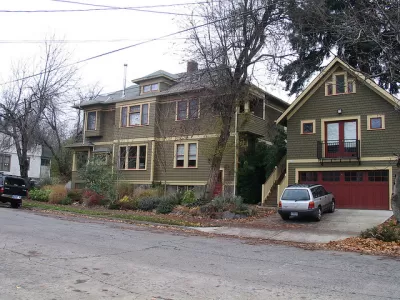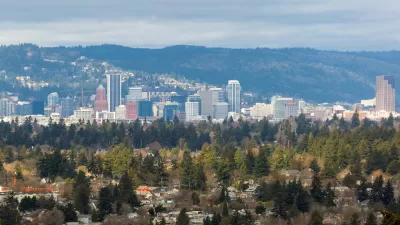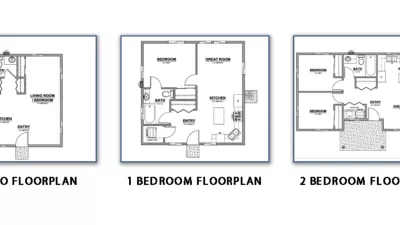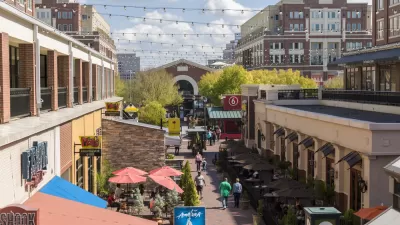A new report by the Urban Institute examines the consequences of small differences in land use regulations.

"Why did accessory apartments catch on in Portland but not DC? A new study from the Urban Institute compares the land-use reform process in each city, as well as the end result."
Libby Solomon shares news of a newly published comparative analysis of the efforts of two cities to allow accessory dwelling units (ADUs): Portland and Washington, D.C.
The premise of the analysis: that Portland has been far more successful in achieving the desired development of ADUs, despite the similar intentions of land use reforms passed in the past decade in each city, both with similar development histories and populations.
"But that’s where the similarities end," writes Solomon to summarize the findings of the report. "[W]hile Portland’s accessory units skyrocketed, with hundreds built each year, DC’s accessory apartments saw a much smaller bump. From 2017 through 2019, Portland issued more than 1,500 ADU building permits; DC issued only 68."
According to the Urban Institute's analysis, property owners in D.C. face structural and historical issue that make ADUs significantly more difficult and expensive to build.
"In the end, DC’s new zoning regulations passed allowing accessory units by right in residential zones. But those regulations are more restrictive than advocates wanted," writes Solomon. "The Urban Institute researchers write that ADU regulations are too complex for many to navigate without hiring lawyers and architects; the space requirements cut out many potential builders; and the rules require the owner to live on the property."
A lot more analysis and insight into the findings of the report are available in the source article.

Study: Maui’s Plan to Convert Vacation Rentals to Long-Term Housing Could Cause Nearly $1 Billion Economic Loss
The plan would reduce visitor accommodation by 25,% resulting in 1,900 jobs lost.

North Texas Transit Leaders Tout Benefits of TOD for Growing Region
At a summit focused on transit-oriented development, policymakers discussed how North Texas’ expanded light rail system can serve as a tool for economic growth.

Using Old Oil and Gas Wells for Green Energy Storage
Penn State researchers have found that repurposing abandoned oil and gas wells for geothermal-assisted compressed-air energy storage can boost efficiency, reduce environmental risks, and support clean energy and job transitions.

Santa Barbara Could Build Housing on County Land
County supervisors moved forward a proposal to build workforce housing on two county-owned parcels.

San Mateo Formally Opposes Freeway Project
The city council will send a letter to Caltrans urging the agency to reconsider a plan to expand the 101 through the city of San Mateo.

A Bronx Community Fights to Have its Voice Heard
After organizing and giving input for decades, the community around the Kingsbridge Armory might actually see it redeveloped — and they want to continue to have a say in how it goes.
Urban Design for Planners 1: Software Tools
This six-course series explores essential urban design concepts using open source software and equips planners with the tools they need to participate fully in the urban design process.
Planning for Universal Design
Learn the tools for implementing Universal Design in planning regulations.
Ascent Environmental
Borough of Carlisle
Institute for Housing and Urban Development Studies (IHS)
City of Grandview
Harvard GSD Executive Education
Toledo-Lucas County Plan Commissions
Salt Lake City
NYU Wagner Graduate School of Public Service





























